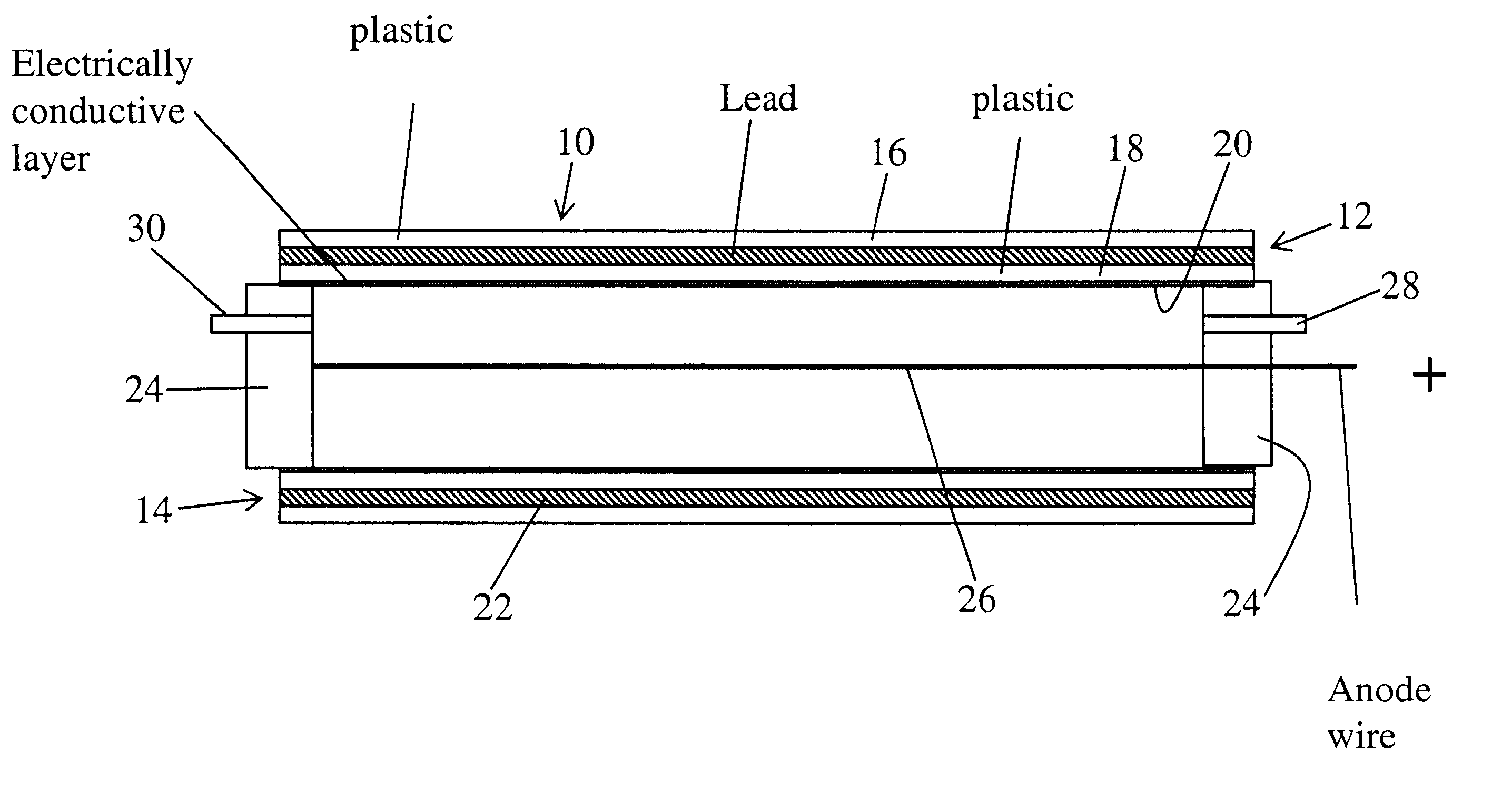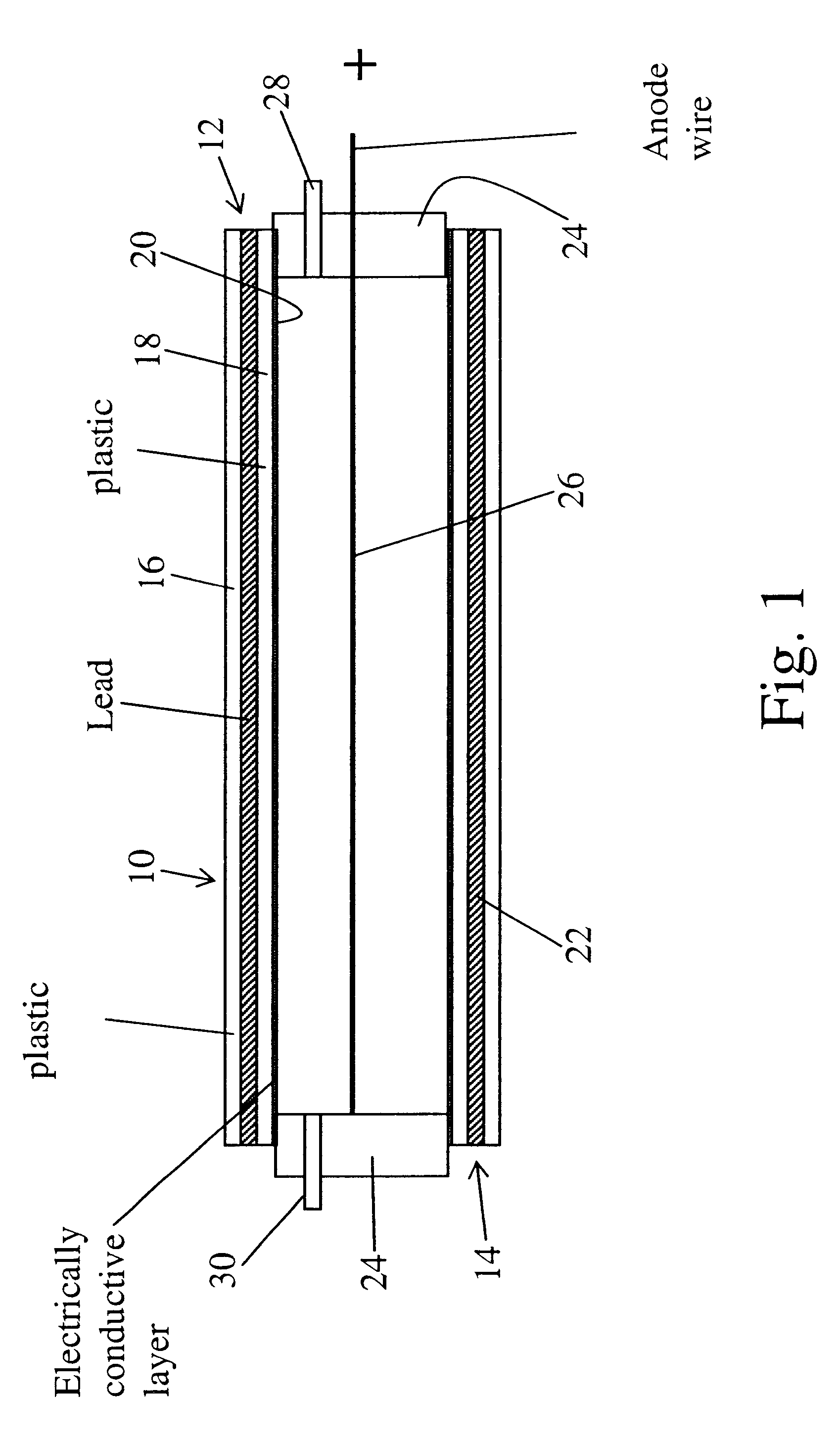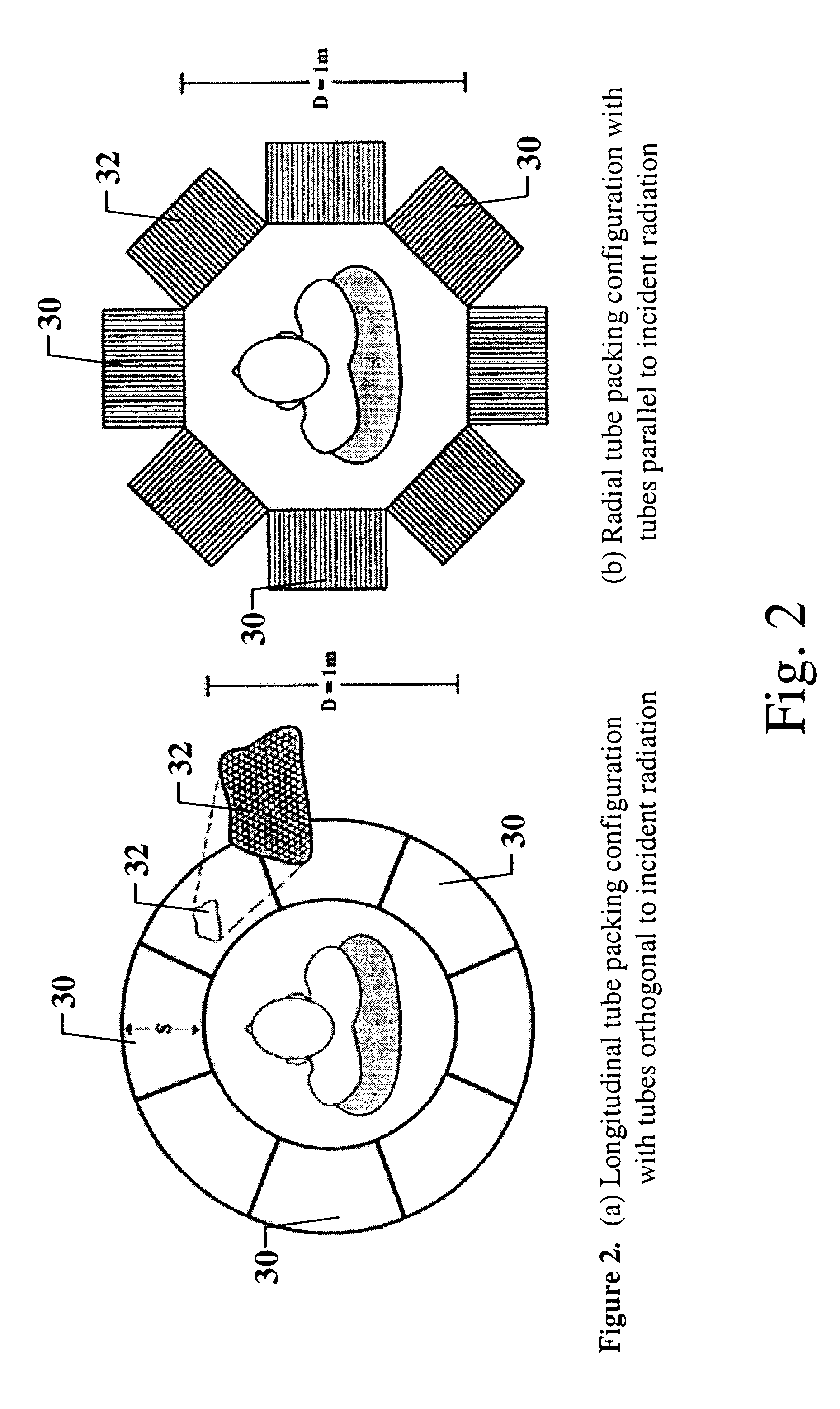Positron camera
a positron camera and positron beam technology, applied in the field of positron beam camera, can solve the problems of inability to distinguish tissue with no other technique, inability to produce three-dimensional imaging with unparalleled quantitative content, and poor suitability of pet camera technology for many important purposes
- Summary
- Abstract
- Description
- Claims
- Application Information
AI Technical Summary
Problems solved by technology
Method used
Image
Examples
Embodiment Construction
Here it is proposed to use thin Pb converters, which can provide essentially any required degree of reduction of Pb converter thickness, in order to obtain efficient photoelectron escape, while at the same time acceptable time resolution. This is accomplished through use of straw detectors which have become a very well developed inexpensive technology in high energy physics. The radiation detectors of this invention comprise a thin plastic tube, typically 4-5 mm in diameter, coated on the inner wall with a vapor deposited conductive coating, such as copper or aluminum. The plastic wall thickness is 0.002"-0.0005", and the conductive metal layer is of negligible 1,000 angstrom thickness. The basic plastic tube complete with conductive metal coating can be manufactured in mass quantities by utilizing techniques developed in the soda straw industry and since no expensive, consumable materials are required, the cost of such tubing is very small. A central anode wire of diameter 20 micro...
PUM
| Property | Measurement | Unit |
|---|---|---|
| pressure | aaaaa | aaaaa |
| thickness | aaaaa | aaaaa |
| thickness | aaaaa | aaaaa |
Abstract
Description
Claims
Application Information
 Login to View More
Login to View More - R&D
- Intellectual Property
- Life Sciences
- Materials
- Tech Scout
- Unparalleled Data Quality
- Higher Quality Content
- 60% Fewer Hallucinations
Browse by: Latest US Patents, China's latest patents, Technical Efficacy Thesaurus, Application Domain, Technology Topic, Popular Technical Reports.
© 2025 PatSnap. All rights reserved.Legal|Privacy policy|Modern Slavery Act Transparency Statement|Sitemap|About US| Contact US: help@patsnap.com



